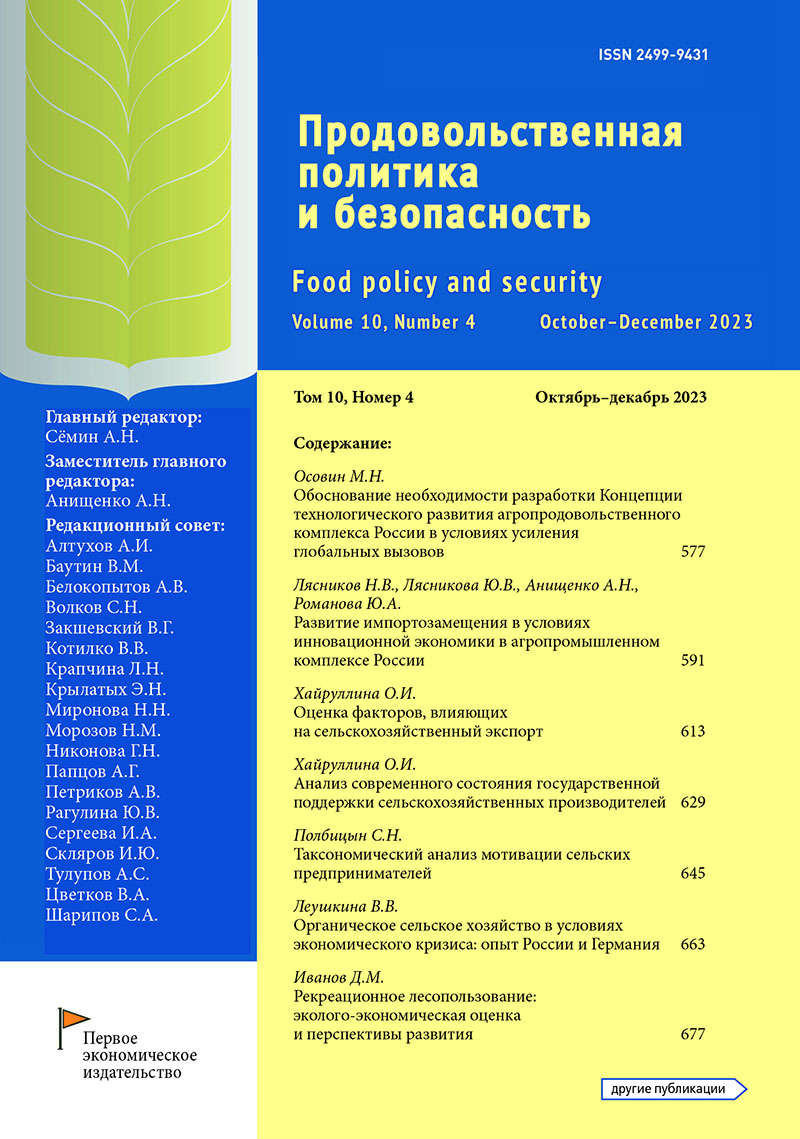Food Policy and Security
Peer-review quarterly economic journal published since 2014.
Editor-in-Chief
- Semin, Aleksandr - ead of the Department of Strategic and Industrial Management of the Ural State Mining University, Academician of the Russian Academy of Sciences, Doctor of Economics, Professor, Vice-President of the Ural Branch of the Free Economic Society of Russia (Russia) [WWW], [RSCI], [SCOPUS], [ResearcherID], [ORCID]
About
The journal Food Policy and Security aims to become a center of expertise and information in the field of food security and food policy.
The main theme of the journal is to identify priority research areas of food security at the national and regional levels to develop strategies and tactics, and implementation of state agri-economic and social policy. Food security is considered in the context of national security, the preservation of statehood and sovereignty of the country.
The main content of the journal is the results of scholarly and practical research, analytical studies and socio-economic forecasts, discussion papers, interviews with experts, business leaders, representatives of the Russian business. All submissions will be peer reviewed.
Indexation
- Russian Science Citation Index
- Ulrich's Periodical Directory
- CrossRef
- Google Scholar
Publications
- quarterly, 4 issues per year
Current Issue
Vol 10, No 4 (2023)
Articles
Substantiation of the need to develop a concept of technological development of the Russian agro-food complex amidst global challenges
Abstract
 577-590
577-590


Developing import substitution in the conditions of innovative economy in the Russian agro-industrial complex
Abstract
 591-612
591-612


Assessment of factors affecting agricultural exports
Abstract
 613-628
613-628


Analysis of current government support for agricultural producers
Abstract
 629-644
629-644


Taxonomic analysis of rural businessmen's motivation
Abstract
 645-662
645-662


Organic agriculture amidst economic crisis: Russian and German experience
Abstract
 663-676
663-676


Recreational forestry: ecological and economic assessment and development prospects
Abstract
 677-692
677-692


Crop production in Russia and the Bryansk region: current trends and development priorities
Abstract
 693-718
693-718


Barley production and consumption trends in the Russian Federation
Abstract
 719-734
719-734


Implementation of system management in food security
Abstract
 735-748
735-748


Analysis of hazardous factors in the food safety management system
Abstract
 749-762
749-762


Ensuring economic security in public procurements by methods of anti-corruption control
Abstract
 763-780
763-780


Стратегические аспекты формирования системы продовольственной безопасности Южной Осетии
 781-791
781-791











